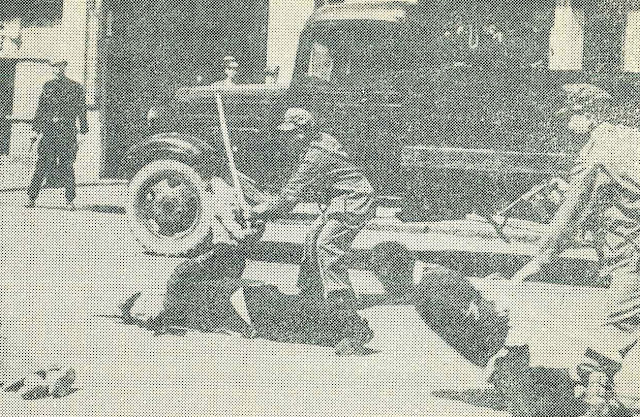In the early morning of April 27, 1927, the gangs controlling Shanghai's underworld attacked the Workers' Inspection Corps, which led to the invasion of the Baixi Army under the orders of the Kuomintang rightists, who disarmed the Workers' Inspection Corps and shot dead those who resisted. Zhou Enlai, who commanded the workers' police, escaped and fled the city. Over the next three days, Shanghai became a city of blood, as machine gun fire mercilessly swept through the city's 200,000 protesters. Many Communist Party members and revolutionary workers were arrested and shot dead in various places in Shanghai. On April 15, a similar massacre took place in Guangzhou, and from then on, white terrorists abused and massacred resisters in areas controlled by the Kuomintang forces.
At the Nationalist Party Congress in Hankow in March, the CPC and the leftist faction monopolized the power and abolished the commanding general system of the National Revolutionary Army. Chiang Kai-shek became a mere member of the military commission and lost his real power; on April 6, Beijing police raided the Soviet legation, and secret documents revealed the Communist Party of China from the CPC molecules and weapons tasked with the Red Revolution. In Shanghai, from May 1926, strikes broke out strangely in various factories because of the Communist Party of China; in February 1927, a general strike of about 360,000 people developed; in March 1927, a provisional government was set up by the Communist Party of China; in July 1926, the National Revolutionary Army began its northern deforestation, which reached the Yangtze River basin in November. On January 1, 1927, the Nationalist government was moved from Guangzhou to Wuhan. The Shanghai coup d'état led to a split in the Wuhan government on April 18, when the Nationalist government was moved from Wuhan to Nanjing.
The right-wing faction of the Kuomintang (KMT) imposed martial law from the beginning of April 1927 and gradually disarmed the inspection force of artisans. Finally, on April 12, they attacked the General Engineering Council at once. Before dawn on April 12, 1927, the Kuomintang Revolutionary Army began to attack the district offices controlled by the union workers in Zhabei, Nansi, Pudong, etc. The KMT suppressed the Chinese Communists, captured dozens of cadres and massacred them by firing squad in the streets. Under an emergency decree, the KMT 26th Army was ordered to disarm the workers' militia. As a result of that order, about 300 more people were killed. Union workers organized a mass meeting to condemn the蔣介石 on April 13, and thousands of workers and students protested at the headquarters of the 26th KMT Army. The KMT soldiers opened fire, killing about 100 people and injuring many more civilians. The KMT dissolved the Provisional Government in Shanghai, the trade unions, and all other organizations under the control of the Communist Party, forcing them to swear allegiance to the KMT and reorganize their trade union links. By some estimates, some 1,000 or more communists were arrested. About 300 of them were put to death, and more than 5,000 went missing. Other estimates are that about 5,000 to 10,000 were murdered.

